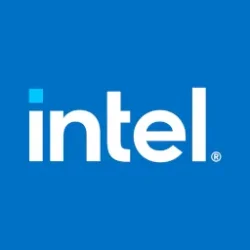Intel Newsroom:
Hidden out of plain sight, small, suitcase-sized boxes perched high on transmission towers are responsible for every cellphone call, video and text, every second, every day.
Crammed inside each box, an orchestra of Intel-based communications equipment – GPU, CPU, network interface cards and numerous other electronics – must be kept safe from extreme weather (think sub-zero temperatures or scorching desert-like heat) to operate efficiently.
The communications boxes must also meet stringent local regulations. For example, they must be relatively light, weighing in at no more than 22 kilograms (less than 50 pounds), and have to run quietly.
As AI usage grows across numerous devices powering a new AI-centric era, so too does the demand for computing. All that demand takes power to run the central processing units (CPUs), graphics processing units (GPUs) and network cards. And that generates heat – lots of heat. Some 5G-based devices run at up to 81 degrees Celsius under full load.
Left unchecked, that heat will degrade performance, lead to system instability and potentially trigger hazardous fires.
Nexalus has exactly what these customers need.
Taking a Scalpel to a Red-Hot Issue
Headquartered in Cork, Ireland, this scientific and engineering company has collaborated with Intel to develop advanced thermal solutions that optimize efficiency and reduce costs of CPU- and GPU-based edge deployments.
These solutions, featuring smart heat exchangers, cold plates and tiny microjets that quickly pump cooling liquid across the hottest parts of a CPU and GPU, can capture over 95% of computation energy dissipated, repurposing it into hot water that can be redirected elsewhere as sustainable heat sources.
The tech is encased in the suitcase-sized, weather-sealed IP66 box that holds the tech to power modern 5G transmission towers.
This approach – akin to taking a precision-engineered scalpel to a long-standing computing challenge – is a greener, smarter alternative to today’s noisy, energy-inefficient cooling methods, like air-cooled ventilation fans.
Nexalus specifically engineered this technology for Intel® Xeon™ processors. It’s the result of 2-plus years of research, design and rapid prototyping with Intel engineers around the world.
As Intel developed its CPU roadmap, teams shared blueprints and plans with Nexalus.
That vital information – like the specific location of computing cores that tend to generate the most heat under large workloads – helped the firm speed the development of its proprietary algorithms and optimize its advanced thermal solutions to target specific areas of the chip.
“We helped Nexalus to debug and to test their tech in varying real-world conditions, ensuring the CPU, GPU and memory were stressed to extreme temperatures in order to gauge its impact on performance and power levels,” said Uzair Qureshi, system architect in the Edge Compute Group that is part of Intel’s Client Computing Group.
Qureshi added that Intel teams spent up to nine months performing intensive tests with a singular goal: ensuring the system would not fail in ruggedized environments and could deliver the intended results without any CPU throttling.
A Multiyear Collaboration
As Intel innovates and unveils new CPU designs for performance-hungry data centers and telecommunications customers, Nexalus remains in lockstep, delivering advanced cooling solutions that ensure high-performance chips operate at peak efficiency in the most rugged environments imaginable.
The joint team also co-engineered these designs:
- Intel Flex Single-Slot GPU Block: A collaborative design that optimizes cooling and performance of GPUs.
- Next-Generation NIC Cooling Solutions: Advancing thermal management solutions for Intel’s Ethernet solutions like the Intel® Ethernet E810 Controllers and Network Adapters.
- Overclocking Intel® Xeon® CPUs: With Nexalus’ advanced cooling, customers are able to push Intel-based CPUs from 270 watts to 900 watts without any performance issues. This technology is used across industries. In Formula One racing, for example, numerous racing teams use Intel products enabled by Nexalus cooling for finite element analysis (FEA) simulations.
Blevins was among the key Intel technologists collaborating with Nexalus in developing advanced cooling solutions for customers seeking smart, energy-efficient alternatives.
“Nexalus’ innovative approach is currently being evaluated by major OEMs and carriers, showing promising results that will enhance edge computing capabilities at an accelerated pace."
Toward a Future Where Energy is Reused
“We are partnering with Intel and leading OEMs to bring Nexalus’ cutting-edge cooling innovations to the edge and data center markets, helping drive efficiency, sustainability and performance across any industry,” explained Dr. Cathal Wilson, co-founder and chief operating officer of Nexalus.
Where others see a huge energy-gulping data center filled with thousands of toasty devices, Wilson sees an untapped opportunity: the potential to redirect that wasted thermal energy into a sustainable heat source – one that could keep homes warm in winter or provide hot showers to neighboring communities.
“At Nexalus, we share Intel’s commitment to innovation — specifically in thermal science and engineering. Together, we’re redefining how CPUs and GPUs consume and repurpose energy. We see a future where computing power drives not only performance but also sustainability.”
Source:

Nexalus, Intel Deliver Innovative Cooling Tech as Computing Demand Grows
Smart co-engineering delivers new cooling solutions that capture over 95% of heat from CPUs, paving the path to more sustainable heat sources.









